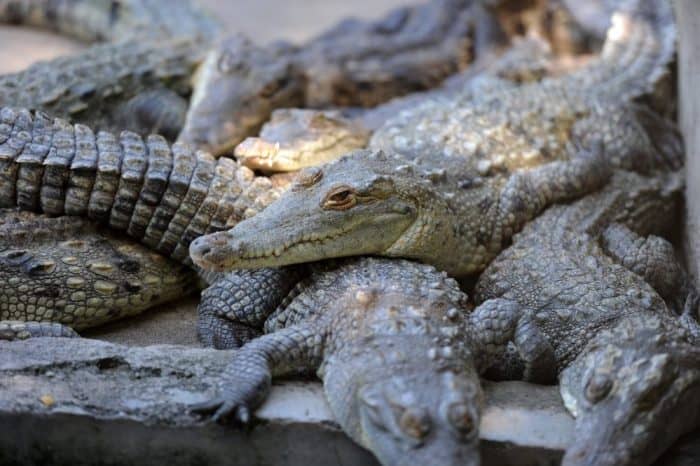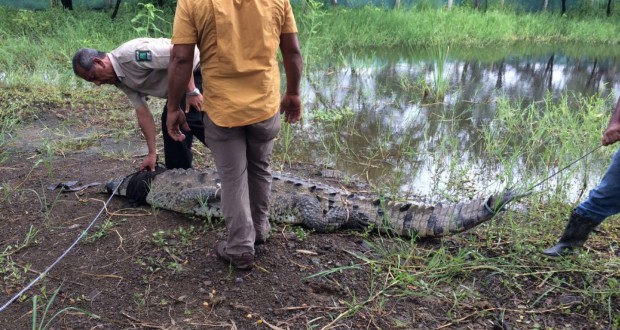The crocodile that attacked a U.S. surfer in July in Tamarindo’s Playa Grande Estuary was reported captured on Monday.
Officials with the National System of Conservation Areas (SINAC) and Las Baulas National Marine Park, in which the estuary is located, captured and relocated the animal Oct. 16, according to a Monday posting from Tamarindo’s Development Association. However, the news was not made public until yesterday, in the wake of a Tamarindo Tourism Chamber request for a court order forcing SINAC to take action.
The tourism chamber issued a request to a San José court this weekend, calling on the SINAC to take action in removing the crocodile that bit 59-year-old U.S. surfer Jon Becker on July 22, causing his leg to be later amputated.
Attorney and environmental activist Walter Brenes of Energy Law Firm, who spoke with The Tico Times recently about his claims that the government is ignoring rising crocodile populations, drafted the judicial request demanding a swift response from SINAC. Brenes has argued that the government isn’t conducting the necessary studies and continues to enact environmentally friendly laws that let crocodile numbers boil over in tourism hotbeds like Tamarindo.
“I know that crocodiles can be in the ocean, but it’s not rational that the government refuses to help at all with this issue,” Brenes told The Tico Times. “They can’t be so protective of the animals that they put humans in danger and risk tourism dollars.”

SINAC and the Costa Rican Environment Ministry, which are in charge of overseeing wildlife, have publicly said that there is no overpopulation of crocodiles in Costa Rica. Sightings like the ones at a recent international surf competition where crocodiles were seen in the water with surfers in Esterillos Oeste are normal, a SINAC report said.
In the Tamarindo Tourism Chamber’s court papers, Brenes said that SINAC’s inability to capture and remove the crocodile that harmed Becker in the nearby Playa Grande Estuary had damaged Tamarindo’s international image for tourists and made the community generally unsafe.
Brenes estimated that more than 80 crocodiles are located in or around the Playa Grande Estuary, an area which he said can only support 30 crocodiles. Including the attack on Becker, the town has reported three crocodile attacks in the estuary since 2013.
Citing a constitutional right to a healthy and balanced ecosystem, the tourism chamber’s letter to the government read: “Taking this action would guarantee the safety of people, as well as protecting the tourism and commercial interests of the community.”
Over the weekend, a local judge gave SINAC three days to respond or petition the relocation request. The government agency then responded Monday with an apparent video of the crocodile’s capture in the estuary more than a week earlier.
SINAC representatives have indicated that the species of crocodile in Costa Rica – the crocodylus acutus – can inhabit fresh water, sea water and brackish waters, the latter of which are found in estuaries. These crocodiles instinctually flee from humans unless they are attacking out of self-defense or become disorientated, the SINAC report said.
See also: Costa Rica’s crocodile conflicts






